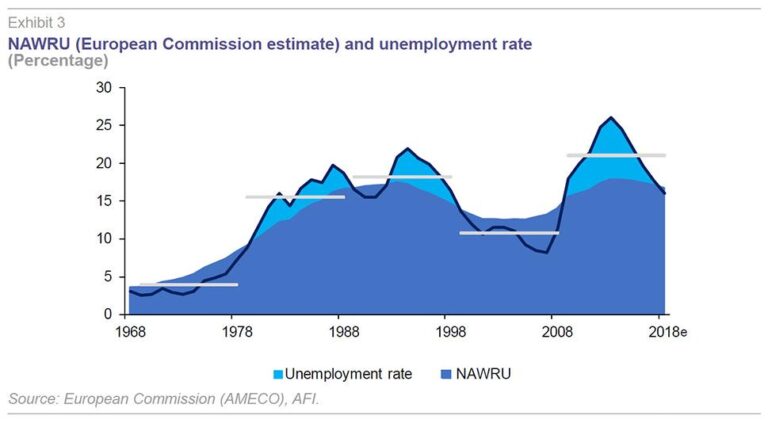Spain’s unemployment figures saw an uptick in October, with the number of jobless rising by 0.91% compared to September, reaching a total of 2.44 million, according to data reported by TradingView. This increase signals ongoing challenges in the Spanish labor market as the country navigates economic uncertainties amid global and domestic pressures. The latest statistics shed light on the employment landscape ahead of the year-end period, raising concerns about prospects for job growth and economic recovery.
Spain Faces Rising Unemployment in October as Jobless Figures Climb
Spain’s labor market experienced a setback in October, with unemployment numbers edging up by 0.91% compared to the previous month. The total count of jobless individuals now stands at approximately 2.44 million, reigniting concerns over economic recovery efforts post-pandemic. Key sectors such as hospitality, retail, and manufacturing have been hit hardest, reflecting ongoing challenges within both seasonal and structural employment dynamics.
Several factors contributed to this uptick, including:
- Reduced tourism activity amid lingering travel restrictions.
- Delays in industrial production due to supply chain disruptions.
- Uncertainty in international markets affecting domestic hiring.
| Employment Sector | Unemployment Increase (%) | New Unemployed (Thousands) |
|---|---|---|
| Hospitality | 1.2 | 150 |
| Retail | 0.8 | 90 |
| Manufacturing | 0.9 | 70 |
Economic Factors Driving the Recent Increase in Spain’s Unemployment Rate
Spain’s labor market has encountered significant headwinds due to a combination of external and domestic economic challenges. One major contributor has been the ongoing inflationary pressures which have eroded consumer purchasing power, leading to reduced demand in the retail and service sectors-two pillars of Spanish employment. Additionally, persistent energy price volatility has increased operational costs for businesses, forcing some to scale back hiring or implement layoffs. Meanwhile, disruptions in global supply chains have dampened manufacturing output, directly impacting jobs in industrial hubs.
- Rising inflation: Limits consumer spending, reducing service sector employment.
- Energy costs: Elevated prices strain businesses, especially SMEs.
- Supply chain disruptions: Affect manufacturing production timelines and labor needs.
- Seasonal adjustments: Post-summer employment dips in tourism-related roles.
Government stimulus measures have been tapering, with fewer new fiscal supports available to cushion these economic shocks. Moreover, structural issues such as youth unemployment and regional disparities continue to place uneven pressures across Spain’s labor market. The chart below highlights recent sector-wise employment shifts, illustrating where the most significant job losses have occurred in October.
| Sector | % Change in Employment (Oct) | |
|---|---|---|
| Retail & Services | -1.2% | |
| Manufacturing | -0.8% | |
| Tourism & Hospitality | -1.5% |
| Sector | % Change in Employment (Oct) | |
|---|---|---|
| Retail & Services | -1.2% | |
| Manufacturing | -0.8% | |
| Tourism & Hospitality | -1.5% |
| Policy Measure | Target Area | Expected Outcome |
|---|---|---|
| Skills Development Programs | Youth & Unemployed | 30% reduction in skill gap |
| SME Incentives | Small Businesses | 15% increase in new hires |
| Flexible Contracts | Labor Market | Lower unemployment volatility |
Closing Remarks
As Spain faces a 0.91% rise in unemployment in October, bringing the total number of jobless individuals to 2.44 million, economic challenges remain prominent amid ongoing market uncertainties. Analysts and policymakers will be closely monitoring these trends to assess their impact on the country’s recovery trajectory. Further developments are expected as Spain navigates the evolving labor market conditions in the months ahead.




